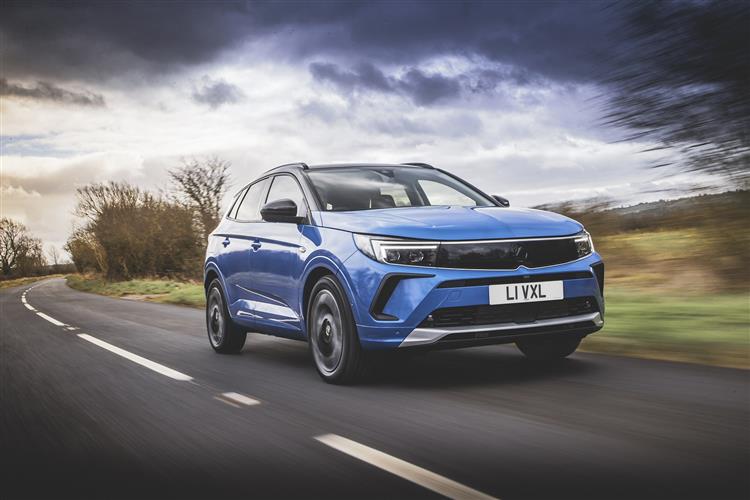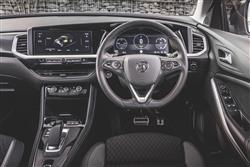AINT LIFE GRAND? (some text hidden) --NONE--
By Jonathan Crouch
Vauxhall adds self-charging Hybrid power into its Grandland compact family SUV to make certain it stays relevant to buyers in this crowded market. Jonathan Crouch takes a look.
Ten Second Reviewword count: 37
Vauxhall's Grandland gets non-plug-in 48V full-Hybrid tech - and it's all the better for it. Here's an ideal interim step for a customer in search of compact C-segment family crossover who isn't quite ready for a full-EV.
Backgroundword count: 136
If you're looking for a new electrified family SUV from Vauxhall, the brand wants you to consider its new Frontera. We'd also counsel you though, to consider the car we're going to look at here, the company's Grandland Turbo Hybrid e-DCT6. No, it's not a full-EV, but it can function much like that for a lot of the time in urban traffic. And it's more affordable than a full-EV in this segment would be and has none of the reliance the full-battery model would have on an under-funded public charging network. There's scope for confusion here because the Grandland has long been available as a 'Hybrid'. But that continuing model is of the plug-in sort. This more affordable 48V Grandland Turbo Hybrid e-DCT6 model can't be plugged in, but it could be all you really need.
Driving Experienceword count: 203
Like the Astra, this Grandland gets the 136hp version of this Hybrid powertrain, rather than the 100hp variant of this unit that primarily powers the smaller Corsa Hybrid. The 48V system is based around the Grandland's familiar 1.2-litre three cylinder petrol engine mated to a bespoke 6-speed e-DCT6 dual clutch auto transmission. Bespoke because that gearbox's casing houses the DC inverter, the Engine Control Unit and a little 28hp electric motor powered by a tiny battery secreted beneath the front passenger seat. On the move, the petrol engine and the electric motor can operate together - or separately. And, unlike with a mild hybrid system like that fitted to say, a Volkswagen Tiguan eTSI, here the car can be driven for short urban distances (under 18mph) on electric power alone. The motor also assists the engine under acceleration - such as from standstill to 62mph, which (helped by 230Nm of torque) takes 10.0s en route to 121mph. Mind you, those figures are only 0.3s faster than the equivalent un-electrified auto derivative. During deceleration, the petrol engine stops and the e-motor acts as a generator to recharge the Hybrid system's 48V battery. The battery also stores the energy recuperated by the regenerative braking system.
To see the full road test text contact us on 0330 0020 227
Pictures (high res disabled)

.jpg)
|
.jpg)
|
.jpg)
| |||
.jpg)
|
.jpg)
|

|
Statistics (subset of data only)
Min |
Max |
|
Price: |
£32,425.00 (At 12 Apr 2024) |
£38,335.00 (At 12 Apr 2024) |
Insurance group 1-50: |
16 |
22 |
CO2 (g/km): |
124 |
127 |
Max Speed (mph): |
121 |
|
Combined Mpg: |
51.3 |
|
Length (mm): |
4477 |
|
Width (mm): |
1844 |
|
Height (mm): |
1636 |
|
Boot Capacity (l): |
514 |
|
Scoring (subset of scores)
Category: Hybrid, Plug-in, Electric & Hydrogen
| Performance | |
| Handling | |
| Comfort | |
| Space | |
| Styling, Build, Value, Equipment, Depreciation, Handling, Insurance and Total scores are available with our full data feed. | |



